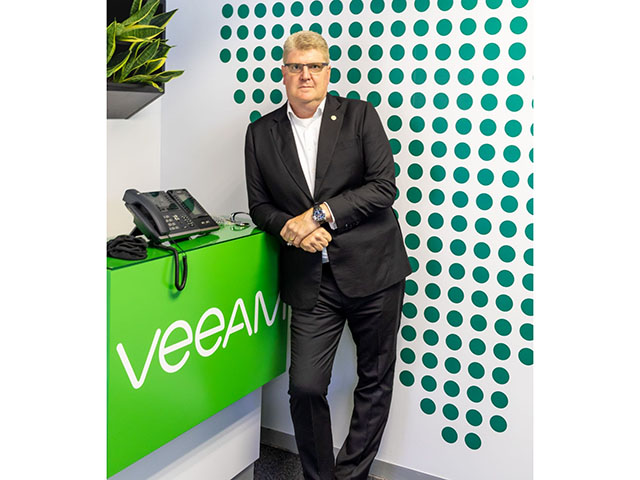Business News sponsored by Drive Control Corporation with Dell Client Peripherals:
By Chris Norton, Regional Director: Africa, at Veeam
The emergence of Kubernetes and containerisation is arguably more important for the evolution of computing than virtualisation about 15 years ago and is poised to see massive uptake in the coming years, providing an attractive skills investment for those looking to future-proof their careers, while giving businesses a massive competitive advantage in the shape of cost savings, availability, flexibility, and portability of infrastructure.
There’s a lot of talk about Kubernetes and containerisation. One doesn’t need to be an IT expert or CIO to appreciate the business value it brings. On the contrary, demystifying the technology provides executive decision makers with the tools required to plot their digital transformation and resilience roadmaps for the next few years. What is it? At its core, containerisation allows for the development of scalable applications that can be deployed quicker and more securely. Kubernetes is an open-source container-orchestration platform.
Broadly speaking, Kubernetes is similar to virtualisation except it's a “layer up”. In any industry, or any technology, you have a physical layer, a virtual layer, the application layer, and then the data. Now, instead of having a physical operating system and applications that run on top of the operating system, with the data above that, Kubernetes sits between the application and the operating system, and it virtualises the application, not the physical infrastructure. Development teams can remove a component without affecting the application. They can work on it, delete it, and move it. It can be shifted between private and public cloud, and even back to physical infrastructure.
What is the business case? Cost optimisation, availability, flexibility, and portability of infrastructure. It’s highly available and it's cost effective because of the simplification of the environment - you can run it on the cheapest platform you can find, with tools that can automatically shift workloads between public clouds to continually minimise costs, while it can also be moved between public and private clouds. This is all possible because it is a cloud-native and vendor agnostic technology.
As with all new technologies, there are generally two phases of coming into the market. The first is where we are now in South Africa, the awareness and conversion phase, which some people refer to as the “evangelising” of the technology. During this phase, proponents work to make companies feel comfortable with the technology, prove that it is safe, that it can be securely backed up, and that there are technologies and ecosystems that support the technology.
The next phase, which will materialise quickly after the phase we are in now in South Africa, driving massive uptake over the coming months and years, is commoditisation. The fully fledged commoditisation of Kubernetes will, over time, see almost everyone using it. There’s already a significant groundswell of containerisation in South Africa, with case studies across industries. Abroad, the use case playbook is rapidly increasing.
Young people looking to go into careers in IT, as well as those already in the workplace seeking to future-proof themselves from a skills perspective, already know about artificial intelligence (AI) and machine learning as good bets for developing skills that will be in high demand. Recently, we ran an internal, informal test on LinkedIn and analysed the Kubernetes job market. The number of jobs indicate precisely what we are encountering on the ground: the uptake, and preparation for uptake, of containerisation means that companies and partners are not just increasing their teams by one or two people, but they’re bracing for increased demand by doubling, tripling and in some instances, even quadrupling their Kubernetes skills investments.
If a parent or young person asked me, today, where to specialise in IT, alongside AI and machine learning, I would tell them that within five years, Kubernetes experts will be in massive demand, alongside specialists who can design and manage robust data strategies.
What then, of security? Security should always be built-in, not bolted on, and a company needs a robust backup and recovery strategy. This strategy exists for two eventualities, recovery in the event of a disaster of some sort, and cyber resilience to be able to back up and recover in the event of a breach from either outside or inside the organisation.
We all know that it is not a matter of “if” this will happen, but rather when. So, when designing the most robust backup and recovery strategy we always advocate for Veeam’s 3-2-1-1-0 strategy: three copies of the data, two on different media, one completely offsite, of which one is immutable, with zero errors. If a company designs its backup and recovery environment along those lines, it would have built robust cyber resilience.
About 15 years ago, when VMWare set up office in South Africa and there was a rapid uptake in virtualisation, companies understood that they needed to back up their virtual machines. They needed peace of mind that if there was a breach or if something broke, they had the ability to reinstate their systems very quickly in the name of availability. Companies that have shifted, or are planning to shift, to containerisation also need a comprehensive backup and recovery strategy, and Veeam advocates for the same principles, along with partners who have the technology and skills to put this into effect.



.gif)


